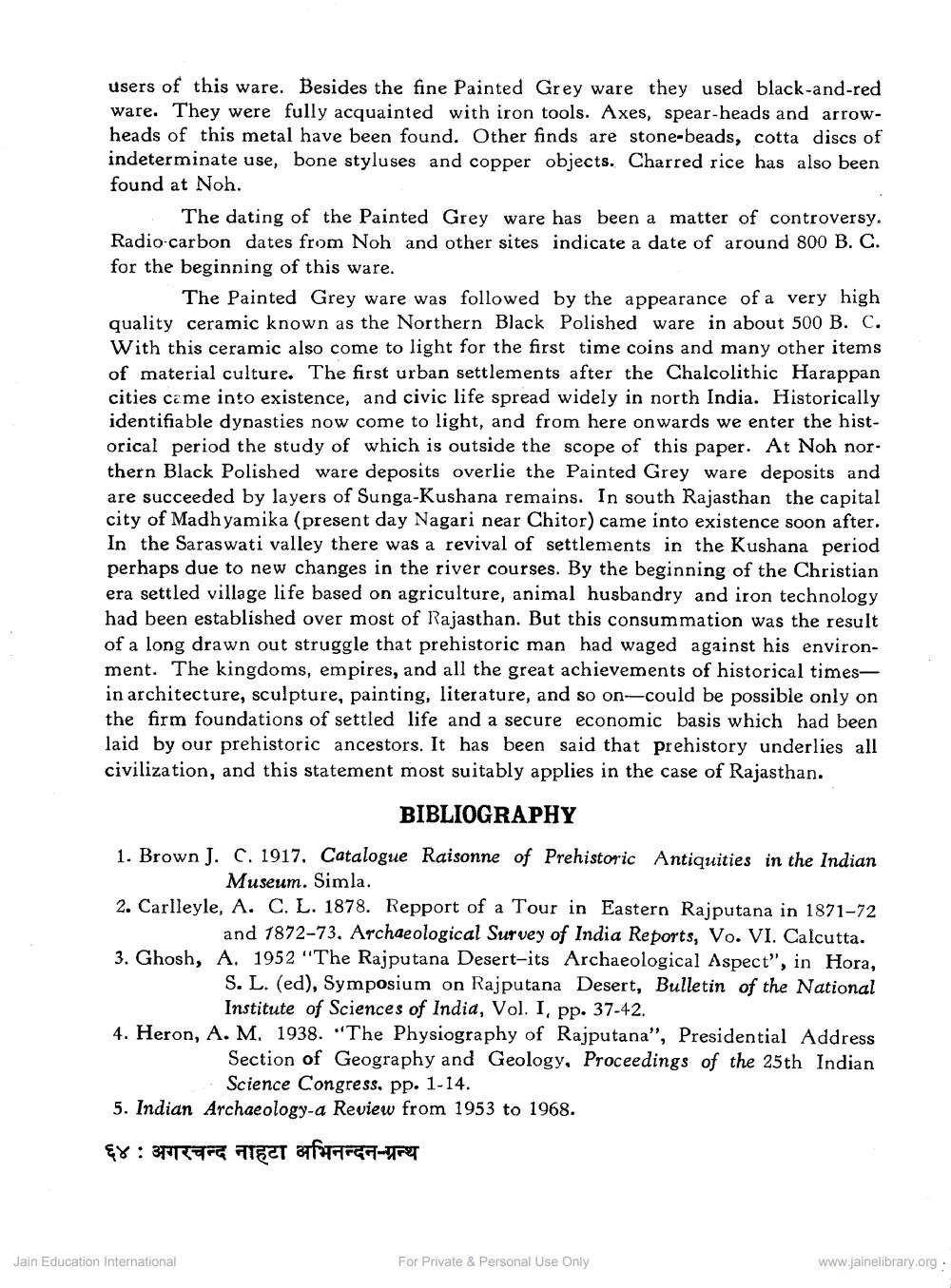________________
users of this ware. Besides the fine Painted Grey ware they used black-and-red ware. They were fully acquainted with iron tools. Axes, spear-heads and arrowheads of this metal have been found. Other finds are stone-beads, cotta discs of indeterminate use, bone styluses and copper objects. Charred rice has also been found at Noh.
The dating of the Painted Grey ware has been a matter of controversy. Radio-carbon dates from Noh and other sites indicate a date of around 800 B. C. for the beginning of this ware.
The Painted Grey ware was followed by the appearance of a very high quality ceramic known as the Northern Black Polished ware in about 500 B. C. With this ceramic also come to light for the first time coins and many other items of material culture. The first urban settlements after the Chalcolithic Harappan cities came into existence, and civic life spread widely in north India. Historically identifiable dynasties now come to light, and from here onwards we enter the historical period the study of which is outside the scope of this paper. At Noh northern Black Polished ware deposits overlie the Painted Grey ware deposits and are succeeded by layers of Sunga-Kushana remains. In south Rajasthan the capital city of Madhyamika (present day Nagari near Chitor) came into existence soon after. In the Saraswati valley there was a revival of settlements in the Kushana period perhaps due to new changes in the river courses. By the beginning of the Christian era settled village life based on agriculture, animal husbandry and iron technology had been established over most of Rajasthan. But this consummation was the result of a long drawn out struggle that prehistoric man had waged against his environment. The kingdoms, empires, and all the great achievements of historical timesin architecture, sculpture, painting, literature, and so on—could be possible only on the firm foundations of settled life and a secure economic basis which had been laid by our prehistoric ancestors. It has been said that prehistory underlies all civilization, and this statement most suitably applies in the case of Rajasthan.
BIBLIOGRAPHY
1. Brown J. C. 1917. Catalogue Raisonne of Prehistoric Antiquities in the Indian
Museum. Simla. 2. Carlleyle, A. C. L. 1878. Repport of a Tour in Eastern Rajputana in 1871-72
and 1872-73, Archaeological Survey of India Reports, Vo. VI. Calcutta. 3. Ghosh, A. 1952 "The Rajputana Desert-its Archaeological Aspect", in Hora,
S. L. (ed), Symposium on Rajputana Desert, Bulletin of the National
Institute of Sciences of India, Vol. I, pp. 37-42. 4. Heron, A. M. 1938. "The Physiography of Rajputana", Presidential Address
Section of Geography and Geology, Proceedings of the 25th Indian
Science Congress, pp. 1-14. 5. Indian Archaeology-a Review from 1953 to 1968. ६४ : अगरचन्द नाहटा अभिनन्दन-ग्रन्थ
Jain Education International
For Private & Personal Use Only
www.jainelibrary.org:




